

Designation:Ikazuchi Class Super Dimensional Large Cruiser (SCB) |
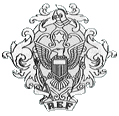
|
||||

|
|||||
| SCB-46 | UES Ikazuchi | Commissioned in 2036 | Destroyed over Earth, 2044. |
| SCB-47 | UES Hood | Commissioned in 2037 | Destroyed over Earth, 2044. |
| SCB-48 | UES Valiant | Commissioned in 2038 | Destroyed over Earth, 2042. |
| SCB-49 | UES Lafayette | Commissioned in 2038 | Destroyed over Earth, 2044. |
| SCB-50 | UES Richelieu | Commissioned in 2038 | In service. |
| SCB-51 | UES Grant | Commissioned in 2038 | Destroyed over Earth, 2042. |
| SCB-52 | UES Bismarck | Commissioned in 2038 | In service. |
| SCB-53 | UES De Ruyter | Commissioned in 2038 | Destroyed over Earth, 2042. |
| SCB-54 | UES Nimitz | Commissioned in 2039 | Destroyed over Earth, 2044. |
| SCB-55 | UES Scharnhorst | Commissioned in 2039 | Destroyed over Earth, 2044. |
| SCB-56 | UES Spruance | Commissioned in 2039 | Destroyed over Earth, 2044. |
| SCB-57 | UES Victorious | Commissioned in 2039 | Destroyed over Earth, 2044. |
| SCB-58 | UES Roosevelt | Commissioned in 2039 | Missing from extended recon patrol. |
| SCB-59 | UES Redoutable | Commissioned in 2039 | Destroyed over Earth, 2044. |
| SCB-60 | UES Indefatigable | Commissioned in 2040 | In service. |
| SCB-61 | UES Ark Royal | Commissioned in 2040 | In service. |
| SCB-62 | UES Yamato | Commissioned in 2040 | In service. |
| SCB-63 | UES Blucher | Commissioned in 2040 | Destroyed over Earth, 2044. |
| SCB-64 | UES Iron Duke | Commissioned in 2040 | In service. |
| SCB-65 | UES Guiseppe Garibaldi | Commissioned in 2040 | Destroyed over Earth, 2044). |
| SCB-66 | UES Yukikaze | Commissioned in 2041 | In service. |
| SCB-67 | UES Bonaventure | Commissioned in 2041 | Destroyed over Earth, 2044. |
| SCB-68 | UES Dedalo | Commissioned in 2042 | Destroyed over Earth, 2044. |
| SCB-69 | UES Saratoga | Commissioned in 2042 | Destroyed over Earth, 2044. |
| SCB-70 | UES Vanguard | Commissioned in 2043 | In service. |
| SCB-71 | UES Leonardo da Vinci | Commissioned in 2044 | In service. |
These ships were built at the Robotech Factory Satellite and the Robotech Repair Factory. Their names are written with the 'UES' prefix.
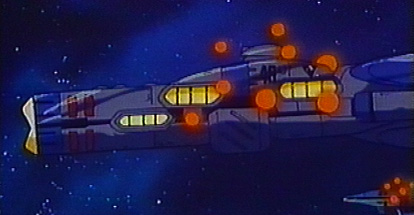
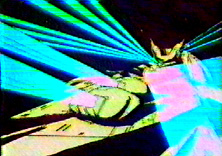
Note: all vessels currently in service have received this refit.
Notes: This is a typical complement c. 2043; only 144 Alphas and 72 fighter-bombers are part of the Naval Air Wing, while the other mecha belong to Army/Air Force or Marine units stationed on board. The exact number and type of mecha vary somewhat due to operational realities. About 660 large mecha total is normal, but there is storage and hangar space for 800+ craft. However, this would cause overcrowding in the launch bays.
Prior to mid 2043, no Alpha or Beta Shadow-variants were in active service in the REF fleet.
The Cyclone number includes mecha pilot emergency Cyclones, reserves and special forces assignments in addition to the infantry forces.
The Ikazuchi-class was developed from the Nergal-class cruisers, which they resemble to a large degree. However, the Ikazuchi class is larger and more capable overall, as well as more suited to receiving upgrades without undue removal of other systems.
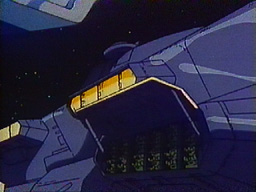
The Ikazuchi series of large cruisers are vaguely rectangular in shape, with a gravity-well attitude that might remind one of a brick flying on its side. The hull narrows considerably in the center, effectively making for an hourglass-silhouette when viewed from the bow or the stern. The four main thrusters are located astern, one on each of the corner-points. The two auxiliary engines are located in sponsons that run along the port and starboard hull, beginning amidships and running along aft until the end of the ship. There is also a command citadel on the upper port side of the vessel, with an observation deck on top of it. Six Alpha launch bays are located on the sides of the ship, capable of launching up to 144 Alphas in battloid mode. The main hangars and their movable blast shield doors are located in the lower amidship levels. The doors cover the exits of three hangar decks and roll toward the stern of the ship when craft are being launched or retrieved. There are also four more secondary hangars with air locks located in the lower nose of the vessel, but these are not capable of rapid launch and are commonly used for shuttles and other non-time critical launch mecha. This gives the Ikazuchi a total of sixteen different hangar bays, which in itself contributes to the ruggedness of the design.
The command citadel houses two command decks, the main hull 12 main decks, though deck 12 is just a small outcropping on the underside of the vessel, usually used as a Horizont shuttle hangar and staging area. The main decks serve the following purposes: deck one is mainly crew and officers' quarters, and this deck houses the navigation computer and the Astrogator and his mates. Deck two contains crew facilities and the port and starboard launch bays. Deck three consists of the senior officers' quarters and the engineering block, which includes the hyperspatial communications array, life support, auxiliary gravity control, and quarters for the engineers' mates. Decks four and seven include much of the quarters and facilities for the crew, as well as the ship's stores. Decks five and eight are mainly used for the Planetary Forces troops, though there are also cargo holds and crew and officers' quarters as well. Decks six and nine contain the auxiliary systems, as well as quarters for the Veritech pilots. Decks ten, eleven, and twelve are mainly hangar facilities for the ship's mecha.
The absence of an extensive point defense capability was the most serious flaw of the pre-refit version of this design. This is even more odd when one considers the rather extensive AAA installations on the SDF-1 and 2, and on the Armor series orbital platforms. This lack of attention to anti-mecha operations in the original design would prove to be very costly. The refitted version added no less than 24 additional defensive cannon emplacements, in a brute-force approach to increase the defenses against Invid ramming tactics.
The Ikazuchi-class became the mainstay of the REF after it had send almost all of its older vessels to the Earth, first to combat the Robotech Masters, then to liberate the planet from the Invid. In 2032 then the REF found themselves depleted both in vessels and in manpower, though they did possess, in the Robotech Satellites, the means to rebuilt the fleet. Since the demographic make-up of the REF delayed significant reinforcements for almost ten years, the REF design bureau decided not to proceed with emergency construction of the existing Nergal class cruiser, but to design a new cruiser, incorporating new advances in warship engineering.
The resulting Ikazuchi-class vessels were powerful, well-armed and remarkably nimble for their size, and boasted a formidable complement of Veritech fighters. These ships were well-suited for fighting a war against an enemy like the Zentraedi or the Robotech Masters, and were thought to be effective against the Invid as well. Early battles against Invid outposts discovered closer to the REF operations area than Earth appeared to support this. However, these small-scale battles were not a true test for the Ikazuchi's defenses, as they were not put up against the numerical superiority the REF would find over Earth. In their defense though it must be remarked that the true Invid numbers on Earth were an unpleasant suprise for all the REF, as they had been continuously estimated far lower.
The vulnerability of the Ikazuchi class was worsened by production problems with the MP-18 particle gun turrets. Although the design was succesful, production ran short of its goals. It suffered both from teething troubles and from lower priority for some of the materials, which were diverted into the Izumo and Garfish production lines; this last under the assumption that the Ikazuchi had at least partial armament, but that the Garfish class could not afford to be completed without its single turret. The Izumo class, as the next-generation battlefortresses, received the highest priority, despite their gargantuan size and complexity. As a result, the earlier ships were fitted with only 8 of their 14 designed turrets, and it was not until 2045 that production of the turrets caught up with demands and the vessels at least could receive their full designed armaments.
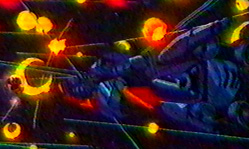
The weaknesses of the design should have become apparent at the Battle of Kappa Pontis 4, where the UES Valiant stumbled upon a huge Invid outpost, and was unprepared for the sheer numbers of Invid Iigaa she would face. The gun turrets mounted on the dorsal hull were sufficient to destroy the Shell Door-class Invid troop carriers for a while; but new ones arrived at such a rate that enough Iigaa were brought in the battle to pin down the defending fighters, and the dearth of effective point defenses allowed the Invid to break through and cause serious damage to the command bridge and upper decks, which had to be evacuated in the middle of battle. Finally the fighters rallied and saved the battle, but inexplicably no lessons were drawn of this experience.
The result were heavy losses for the Ikazuchi class in the various attempts to retake the Earth from the Invid in 2042-2044. The surviving ships all received refits which massively increased their point defense capabilities, and later large cruiser designs, the Julius Caesar- and the Eisenhower-classes, corrected this fault in the post-Invid RNF forces, but despite the losses, the Ikazuchi-class ships have rightfully earned their place in military history.
Return to REF Naval index.
Go to Robotech Reference Guide Home Page.
Robotech (R) is the property of Harmony Gold. This document is in no way intended to infringe upon their rights.
Content by Pieter Thomassen and Peter Walker